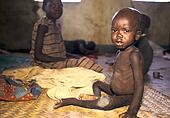“The warming of the planet will be gradual, but the effects of extreme weather events (more storms, floods, droughts and heat waves) will be abrupt and acutely felt. Both trends can affect some of the most fundamental determinants of health: air, water, food, shelter and freedom from disease”. This is a statement made by the Director General of the World Health Organisation Dr Margaret Chan during UN led celebrations of the world environment day a couple of years ago. Her statement followed worldwide concerns about the impacts of climate change on the quality of life on the planet.
Coming across this statement only recently, I felt stirred to shed some light on her statement by explaining the relationship between climate change, human health and well being. In the same light, I was challenged put forward my thoughts on how an act as simple as planting a tree can go a long way to alleviate the effects of climate change on people’s health. Since climate change is attributable to unsustainable human exploitation of natural resources, my belief is that human action towards the restoration of the integrity of our natural environment can contribute significantly to alleviating the impact of climate change on human life. I will begin first by explaining the relationship between climate change and health.
 |
| Courtesy: www.fotosearch.com |
Exposure to heat waves and death or injury from extreme weather is the more common direct impacts of climate change. Although we are in a part of the world (Tropics) where heat exposure is not a noteworthy challenge since we are used to raised temperatures, certain members of our community are less tolerant thereby putting them at risk from increased temperatures. The elderly and those who suffer from cardio-vascular and respiratory disease are less tolerant to high temperatures. This makes them likely to suffer more at the hands of climate change. Floods and cyclones can result in death or serious injuries to people as well. On the other hand, the trauma caused by these events on children may result in prolonged psychological damage. Mental health effects such as depression and anxiety may occur after these extreme events.
 |
| Courtesy: www.picsearch.com |
 |
| Courtesy: www.fotosearch.com |
The combination of high temperatures and rainfall resulting from climate change is likely to increase the spatial and temporal distribution of vector borne diseases such as malaria. After an intense rainfall event or a flood event, rates of vector borne diseases such as malaria can increase as mosquitoes breed in stagnant or slow moving pools of water. Viral and bacterial diseases may also increase because virus and bacteria replication rates are sensitive to temperature.
 |
| Courtesy: www.fotosearch.com |
Climate change affects temperature, humidity and wind which in turn affect the formation, transportation and dispersion of air pollutants. Climate change may therefore influence pollutant concentrations, which may affect health as air pollution is related to cardio-respiratory health. Exposure to high levels of ground-level ozone, for example, which is formed from the exhaust of transport vehicles, increases the risk of exacerbations of respiratory diseases such as asthma. Respiratory allergies and diseases may become more prevalent because of increased human exposure to pollen (due to altered growing seasons), molds (from extreme or more frequent precipitation), and dust (from droughts).
Addressing the effects of climate change on human health is especially challenging because both the surrounding environment and the decisions that people make influence health. However, given the aforementioned impacts of climate change on health, it is prudent to suggest that activities taken to ensure environmental sustainability and reduce greenhouse gas emission have several potential benefits for health as well.
One of the most gainful and holistic ways of tackling climate change while contributing to public health is through planting trees. While I am in no way suggesting that tree planting or good environmental stewardship can replace the provision of basic services such as primary health care, nutrition programmes, and adequate water supply and sanitation, I believe that completely ignoring the value of a healthy planet on human health and well being is potentially calamitous. I shall elaborate on the value of trees in the fight against climate change and the protection of human health and well being in the coming post.

No comments:
Post a Comment